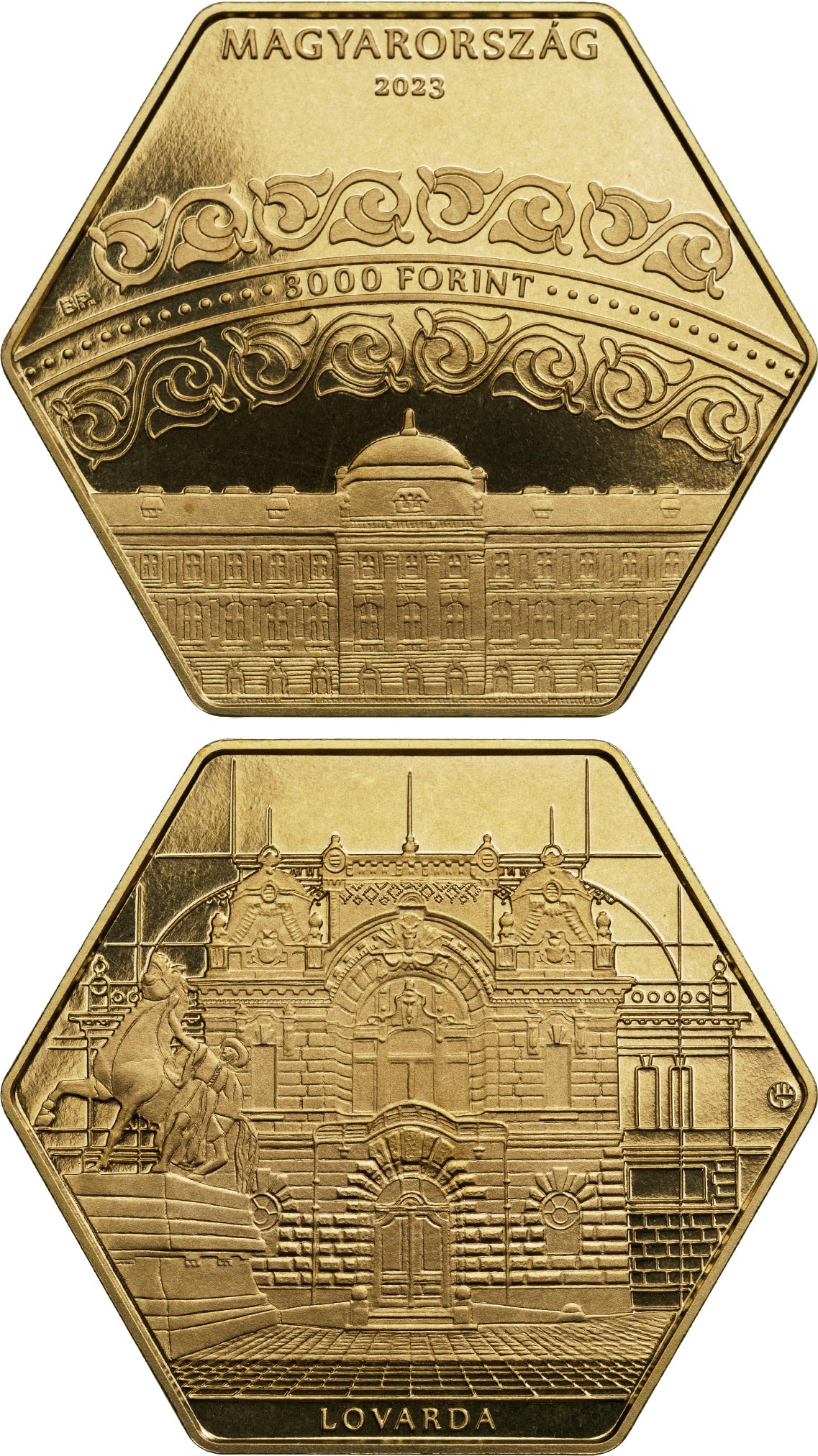3,000 forint - National Riding Hall

The aim of the National Hauszmann Programme is to showcase the face of Hungary’s outstanding intellectual and cultural heritage, the Palace Quarter of Buda Castle as it was at the turn of the 19th and 20th centuries, as envisioned by architect Alajos Hauszmann. The building was demolished after the Second World War, but following its reconstruction it opened its doors as a multifunctional event space in 2021.
The original, neo-Baroque building of the Hungarian Royal Riding Hall, which also bears Art Nouveau features, was built between 1899 and 1901, as designed by Alajos Hauszmann. The Hungarian character of the building is emphasised by the fact that in 1901, György Vastagh Jr’s four-metre-high statue composition by the name of ‘Lovát fékező csikós’ [Horse-herdsman Restraining His Horse] was erected in front of it. The Riding Hall was reserved for the Emperor and his family, and was open to visitors between the two world wars. From 1938, the Buda Castle Guards’ Spanish Riding School also operated here, holding ceremonial equestrian shows and public performances accompanied by orchestral music. The building, damaged during the Second World War, could have been saved but, for ideological reasons, was instead demolished after the Communist takeover.
The structure of the rebuilt Riding Hall follows the building’s original geometry, but modern regulations and the building’s new functions have also influenced its design. The most spectacular part of the interior, the Riding Hall’s decorative carpentered wooden ceiling was originally made by Károly Neuschloss’s company, while the vast, white and green stained-glass windows came from Miksa Róth’s workshop. Post-restoration, the statue of the ‘Horse-herdsman Restraining His Horse’ that had given its name to the Csikós Courtyard, was returned to its original location in front of the building’s main entrance.
The Magyar Nemzeti Bank will issue a commemorative coin with a face value of HUF 3000 entitled ‘National Riding Hall’ as the second piece of the commemorative coin series showcasing the achievements of the National Hauszmann Programme. The primary role of the series is to raise awareness and disseminate information, representing the objectives of the reconstruction of the Buda Castle District, and its elements will not be used in cash circulation. It is planned to issue commemorative coins annually as part of a series of 7 commemorative coins, which will be designed to fit together and will commemorate buildings renovated or reconstructed under the National Hauszmann Programme and other sites in the Castle.
This series – unique among commemorative coin issues by the Bank – will continue: the pieces that comprise it, put together side-by-side, form a honeycomb structure. The characteristic feature of the honeycomb structure is that it combines the smallest possible circumference with the largest possible area, creating a very strong and stable spatial structure from a structural point of view. The shape of the coin also carries a message, calling attention to the worthy preservation of our national values.
The observe of the ‘National Riding Hall’ commemorative coin bears a detail of the façade of the Buda Castle, as it was at the turn of the 19th and 20th centuries. The decorative motif running in a circle above it, reminiscent of the tapestry pattern of St Stephen's Hall, refers to the initial piece of the coin series and, like an interlacing motif, also links together the forthcoming pieces of the series. The motifs are separated by a double circular arch, with a string of beads disconnected by the inscription ‘3000 FORINT’. The obverse also bears the obligatory legal tender designs: the inscription ‘HUNGARY’ and the year of minting ‘2023’ in two lines at the top, and the ‘BP.’ mint mark on the left.
The reverse of the commemorative coin depicts the façade of the Riding Hall, rebuilt under the National Hauszmann Programme, featuring György Vastagh Jr’s ‘Horse-herdsman Restraining His Horse’ statue in the foreground. The building is represented by structured lines in the form of a plan at the edges, which are supplanted by increasingly taller artworks towards the centre, indicating the process of realisation of the plans. The inscription ‘LOVARDA’ [Riding Hal] appears below the building outline. The master mark of applied artist Zoltán Endrődy, the designer of the commemorative coin, is hidden in the design on the right.